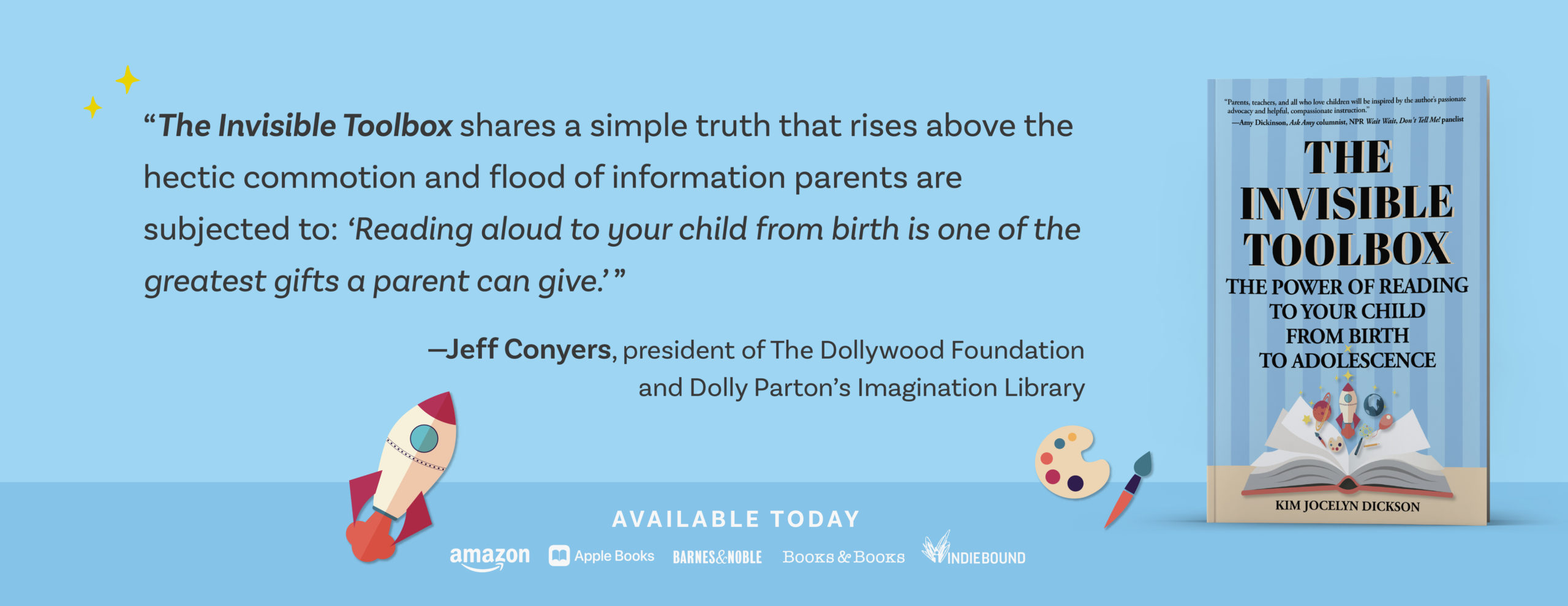 Every child walks through the doorway of kindergarten with a lunchbox in one hand and an invisible toolbox in the other. As we learned in “What’s in Your Child’s Invisible Toolbox?”, children who have been read to regularly in the early years enter school with an invisible toolbox brimming with rich vocabulary. Through hearing stories read aloud, children pick up on and begin to understand the rare words that don’t crop up in ordinary conversation. These words become the foundation that enables a child to comprehend what is taught in school. In fact, research tells us a child’s vocabulary is the number one predictor of school success.
Every child walks through the doorway of kindergarten with a lunchbox in one hand and an invisible toolbox in the other. As we learned in “What’s in Your Child’s Invisible Toolbox?”, children who have been read to regularly in the early years enter school with an invisible toolbox brimming with rich vocabulary. Through hearing stories read aloud, children pick up on and begin to understand the rare words that don’t crop up in ordinary conversation. These words become the foundation that enables a child to comprehend what is taught in school. In fact, research tells us a child’s vocabulary is the number one predictor of school success.
A strong vocabulary is not the only gift in the invisible toolbox of the child who has been read to. There are several tools, or, what educators call “pre-literacy skills,” that make a significant difference in a child’s ability to appreciate and learn from what the world of school offers. A child who has been read to regularly will arrive at school having already internalized these attributes:
They are attracted to books.
Young children who have been read to will make a bee-line for an attractive display of books in a classroom. They will be curious and eager to explore because they already understand that there is something in it for them.
They attend to what is important.
Reading aloud to a child teaches them to listen, pay attention, and focus visually and auditorily. It is easier for them to shut out distractions once they begin school because they are habituated to doing so.
They understand the nuts and bolts of how books function.
We begin at the front and read to the back. We start at the top of the page and read to the bottom. We read the words from right to left. Pictures give us clues to what is happening in the story. Children may even begin to intuit that symbols on the page stand for sounds that become words.
They will become expressive readers.
If a child has been read to regularly by an expressive, engaged adult, he or she will read aloud in the same way because it’s what they know.
You may be thinking, “But can’t all these things be taught in school?” The answer is yes, but the reality is it will be more difficult for the child. The optimum place to learn all of the above is on the lap of a loving parent.
There are many more items in the invisible toolbox, so watch for them in Part III.
